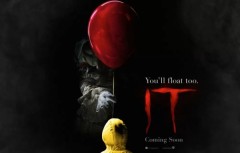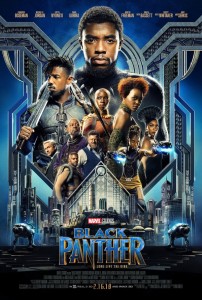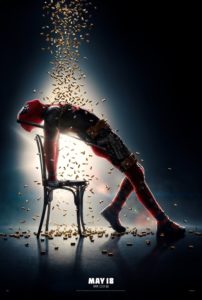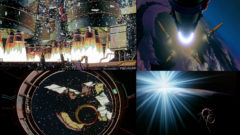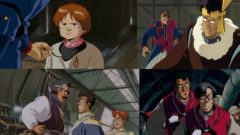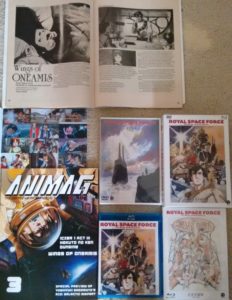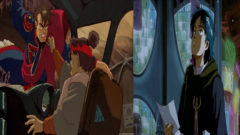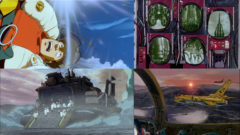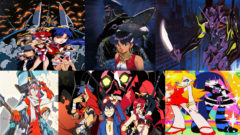![]() Hey folks. Decided to give my final thoughts on one of the best years for genre films I’ve ever seen. A lot of these deserved special recognition beyond what the award shows tend to give (IE: best special effects or some other technical award) but as usual, outside of a couple (which we will definitely get to in this article), we still had the stigma of fans buying tickets for such movies while nominators largely ignore them. That’s not to say there weren’t any really good non-genre works this year. In fact, I checked out a few I wanted to give some praise to.
Hey folks. Decided to give my final thoughts on one of the best years for genre films I’ve ever seen. A lot of these deserved special recognition beyond what the award shows tend to give (IE: best special effects or some other technical award) but as usual, outside of a couple (which we will definitely get to in this article), we still had the stigma of fans buying tickets for such movies while nominators largely ignore them. That’s not to say there weren’t any really good non-genre works this year. In fact, I checked out a few I wanted to give some praise to.
*Darkest Hour – Gary Oldman absolutely deserved his long overdue Oscar for portraying Winston Churchill. The man is a chameleon.
*Dunkirk – Christopher Nolan continues to prove why he’s one of the great visual storytellers of the game. This battle was a sight to behold.
*Girls Trip – One of the funniest, top attended comedies of 2017 … which was not screened or recognized by any award committee for top comedy. Hmmmm….
*Mudbound – I still can’t believe I’m here typing the words double Oscar nominee Mary J. Blige for her work as a both a singer and actress here, or that this well-shot story made Rachel Morrison the first woman ever to be nominated for an Academy Award for Cinematography. Great work here.
*The Post – Nice bit of history and journalism by the usual acting suspects. Pretty solid stuff.
In prepping this article, I omitted action films that aren’t fantasy or sci-fi or such… and came to realize we had some excellent entries in this genre, so much so that… well…. I honestly couldn’t rank the best one for the year, including:
*Atomic Blonde (excellent comic adaptation)
* Baby Driver (beyond excellent editing and use of Atlanta)
* The Foreigner (Jackie Chan, Pierce Brosnan and director Martin Campbell = gold)
* The Hitman’s Bodyguard (crazy blend of action and comedy. better than I though it’d be)
* John Wick Chapter 2 (poor guy just can’t catch a break)
Then I started to pare down the many genre movies I saw and realized some were just not worth effort, such as:
The Dark Tower – D (Should’ve left when I saw book killer Akiva Goldsman attached to the script)
Valerian and the City of A Thousand Planets – D (Looked nice… but then people started talking….)
King Arthur: Legend of the Sword – F (Not even close to a decent take on Camelot)
So I got my 17 (cause I didn’t want to do just 10. Everybody does 10.) and finally started my rankings. The year really good, and it took some serious thought to separate things out. I attached either prior reviews or trailers where warranted. Here goes:
17. Alien Covenant C
I was genuinely excited to see Ridley Scott come back for the Alien franchise, but got tired of the idea of stupid scientists and explorers again. Also, I was rather irritated by the fate of Dr. Shaw from Prometheus, who would’ve been fun to follow into a seemingly dangerous universe that had been hinted at. Nice visuals but upon further consideration, only worth a C, despite more fantastic performance(s) by Michael Fassbender.
Alien: Covenant Review
16. Pirates of the Caribbean: Dead Men Tell No Tales C
I liked the visual effects surrounding the vengeful Captain Salazaar, and the expansion of the storylines of Will Turner and Captain Barbosa, but every scene of our usual protagonist Captain Jack Sparrow felt overly exaggerated for forced humor, making this movie a serious exercise in mental fortitude. Big meh.
15. Ghost In The Shell C+
This is such a weird mixed bag for me. It was nice to see various scenes emulated from the 90s anime movie as well as some elements of the Stand Alone Complex TV series, but… they were missing something. They weren’t totally engaging. The overall movie though was strangely solid though. Also, the much contested presence of Scarlett Johanssonn as Major Kusinagi actually works actually works here as it makes her being here simultaneously a good and bad thing. The city is beautifully designed though. Also, Batou is handled decently, and we get some hardcore “Beat” Takeshi kitano action eventually.
Ghost In The Shell Review
14. Justice League B
Man… this movie… truly could’ve been so much better if it weren’t for backstage executive shenanigans. I actually did enjoy it, but… there’s so much that was made to go wrong. I don’t hold Joss Whedon accountable here entirely as he had a lot of clean-up work to do to streamline what seems to have been a bloated story by Zack Snyder. The biggest issue concerns Steppenwolf. Aside from being one of the (many) special effects that was not well-realized, I never could entirely understand his connection to the Mother Box as interpreted in this version of Jack Kirby’s creation. We hear about Darkseid in one line … that’s about it, and never understand anything about his mother here. Anyway, the movie was a decent action spectacle (though I still hate The Flash’s armor). It was nice to see the DC heroes together and even better to finally get a version of Superman that was the best use of the character since Superman II, which is honestly the reason for the higher grade here.
‘Justice League’ Is A Fun Flick
13. Jumanji B
Genuinely fun addition / remake of sorts. I was surprised at how much I actually enjoyed it. The Rock did a better remake here than Baywatch (thank God).
12. Star Wars: The Last Jedi B+
As a long time fan of the franchise, I generally enjoyed the film but as time wears on, there are some things I still have misgivings about. For one, I didn’t mind General Leia’s space survival scene because I’d wanted to see her display some affinity with The Force since we learned of her parentage. The actual scene could’ve been handled a little better, I grant you, but it largely worked for me. Also, there’s the issue of new character Rose. I liked her in that we get the type of side character who isn’t the superlative star pilot, Force user, or a warrior actually. She tends to machines and stuns deserters. It was fun to see her come into her own and help Finn and Poe in this story. My problem though is how her romance with Finn plays out. It feels contrived and shoehorned in, somewhat out of left field. It’d have been better to not have this pairing develop until the third film or even not at all, instead just have her do her thing and be appreciated on that basis. Laura Dern’s character was ok and all but the audience was asked to believe in her out of the blue since she’s supposed to have some significant relevance to Leia’s character that you had to have read a novel to know anything about. So when she does her final act, it’s cool but doesn’t have the impact that having someone’s connections to the audience such as Admiral Ackbar had. The space bombs at the beginning should’ve had some sort of propellant like missiles to make that scene in a non-gravity environment work. My biggest issue though concerned Captain Phasma, who was hyped heavily in The Force Awakens, but was written dismissively here with nearly no lines and a terrible ending to her character. This honestly pissed me off to the point where I’ve no interest in reading her novel now because she’s pretty much irrelevant and doesn’t really accomplish anything in two movies, as opposed to say Boba Fett, who tracked down and captured Han Solo. Rey’s development is decent but I’d have liked to see more of her training. Which comes to the final thing that makes the movie work at all: the end of Luke Skywalker. Like many people, I wanted to see how powerful he had become as as master of The Force with hellified green lightsaber skills he’d been indicating he was training for during The Force Awakens. Instead, we got what we got, which although it featured an excellent performance by Mark Hamill depicting a compelling final arc for this iconic character and his psyche (as explored by an excellent article by Zac Bertschy), is quite different than what many wanted to see and thus met with resistance that big screen executives shouldn’t dismiss. Speaking of which, where does this leave the next film in terms of villains as it’s become quite clear that without Supreme Leader Snoke, Kylo Ren is a whiny jerk and General Hux is… well, an idiot. We now have nothing resembling compelling villains to look forward to guiding The First Order, which is only dangerous due to superior technology. So, all in all, The Last Jedi is an entertaining film to watch but definitely has flaws to it.
Star Wars: The Last Jedi Review
11. Spider-Man: Homecoming A-
Please do not mistake this entry as being weak since it’s not in my top ten. There were just so many strong contenders in 2017 that I had to make hard choices. That said, It’s a lot of fun seeing Tom Holland as teenager Peter Parker trying to adjust to his newer life as Spider-Man while living up to expectations set by Tony Stark and Happy Hogan in the wake of Civil War. You tend to feel for this kid trying to do right by everyone around him and not totally getting everything right despite his super powers, much like he’s been written in the comics all these years. The surprise though was how well-written and acted The Vulture was as depicted by Michael Keaton. He’s someone you can kinda root for in a sense as he and his crew have been forced into desperate measures because of Tony Stark. I’ve never like The Vulture in the comics, but here, he’s become my 4th favorite villain in the MCU overall.
10. Kong: Skull Island A
The high caliber of actors including Samuel L. Jackson, John Goodman, John C. Reilly and Tom Hiddleston help the interesting take we get with King Kong this go around as we’re taken on an ersatz rendition of apocalypse Now…. with giant monsters. The effects are very well done but it’s also cool to follow the story of these characters’ adventure as they’re taken through some horrible stuff they did not ask for. For my money, this was the best ever King Kong movie period, and portends some wonderful stuff for fans of kaiju movies in general.
9. Thor Ragnarok A
The previous movies about the God of Thunder were ok, but were missing something. It was fun getting to know Thor and his brother Loki through their adventures and conflicts. This particular movie though has fun with their dynamic but also embraces the larger and more cosmic aspects of their existence as gods and larger than life figures much like the comics of Jack Kirby and later Walt Simonson did, with a goofy Flash Gordon-type vibe to boot. While I absolutely hated how important characters were taken out with little fanfare, I did enjoy Cate Blanchett chewing scenery as Hela, the Goddess of Death. Equally fun was Jeff Goldblum as the laid back but callous elder known as The Gamesmaster, who manipulates The Incredible Hulk as Thor’s opponent in gladiator combat. We also got an interesting addition in Tessa Thompson as the angry and somewhat enigmatic Valkyrie. Hopefully we’ll get to see more of her in future films, as we await some serious unpleasantness in Avengers: Infinity Wars.
8. Get Out A
Jordan Peele wrote his ticket to instant stardom outside of his run in Key and Peele. in his racially charged horror debut, tackling a subject the likes of which has not really been seen in mainstream suspense movies. There are a couple spots of levity here and there but it’s very much a terrifying situation that we find lead character Chris involved in. The entire cast is very effective depicting tensions (subvert and overt) until we get to a point where we actually wind up liking of all people… the TSA. Peele penned a brilliant script worthy of George A. Romero’s original Night of the Living Dead that won Peele the Oscar for Best Original Screenplay. I was very happy to see Get Out given more Oscar consideration for best picture, best directing and best actor regarding breakout star Daniel Kaluuya. It’ll be very sad if the rumor is true that older Academy members were deliberately ignoring any screening of this movie, but then… sadly it will be no surprise either.
7. Stephen King’s It A
How do you amp up what was considered one of the better adaptations of a Stephen King novel? You make the visuals incredible with a modern film budget instead of a made for TV budget, and you actually take the time to make us care for your characters, paying great attention to their acting and story development. Pennywise was frightening to experience, but pulling us into the general misadventures of The Losers Club (beginning with Georgie’s horrible fate) is what makes the film so effective.
Stephen King’s It (2017) Review
6. Guardians of the Galaxy Vol. 2 A
In another of those highly regarded, financially successful comedies that the Golden Globes didn’t nominate for best comedy, we return to the cosmic section of the MCU in the sequel to one of the most highly regarded movies from that franchise. Guardians of the Galaxy Vol. 2 had me cracking up from beginning to end. I’ve noticed a certain divide in reactions to it. Usually, the older the viewer, the better the reaction. It’s rather intriguing. Nonetheless, I can’t wait to see what James Gunn has in store next.
Guardians of the Galaxy Vol. 2 Review
5. Wonder Woman A
With the DC movie universe seemingly not ever going to come near the critical success or fan connection that had largely been achieved by Marvel Studios’ film success, it was down to the amazon princess to do what had never been done before: have a comic book movie led by a female character become a complete success. Thanks to Patty Jenkins, we got to see Gal Gadot assume her place at the forefront to succeed Lynda Carter and take Wonder woman to new heights in record setting fashion. Definitely one of the most important films of the year, as well as one of the best.
Wonder Woman Review
4. War For The Planet of the Apes A
There are very few film trilogies without a weak segment or a weak ending. The recent Planet of the Apes movies manage to satisfy entirely in both aspects. From Dawn, to Rise, til now, weve seen Caesar rise as an effective leader for ape-kind as well as a loving husband and father for his family. As we’re taken through his final battle with the single minded Colonel (Woody Harrelson) for the domination of the Earth, we see a very memorable tale play out to its endgame with the futures of ape and mankind decided. CG actor Andy Serkis deserves a special award alongside director Matt Reeves for bringing War to celluloid life.
War For The Planet Of The Apes Review
3. The Shape of Water A+
I was very glad to see Guillermo Del Toro’s work earn various Oscars including Best Picture and Best Director, as well as a Best Actress nomination for Sally Hawkins. It’s a beautiful love story and a great tribute to the Creature From The Black Lagoon type movies I grew up watching. I was honestly sad when I’d heard folks in the audience laughing dismissively at the relationship between the deaf cleaning woman and the merman she communicates with. Honestly, I think if you keep an open mind, you’ll appreciate its production design as well as how the events play out. In addition, Michael Shannon continues to be an excellent villain actor.
2. Logan A+
This is one of two films I will argue is the best genre flick of the year. Right from the beginning, the gravitas that both Hugh Jackman and Patrick Stewart bring to James Manigold’s story is established and never let’s go, especially as we’re introduced to X-23 / Laura who is equally good. It’s one hell of a fitting end to the 2000s X-Men as we knew them and I just couldn’t stop thinking about everything that took place here. The academy nomination for its screenplay is well-deserved.
Logan Review
1. Blade Runner 2049 A+
My other contender for best genre film really was a breathtaking film. Watching Ryan Gosling’s K make his way through a wretched version of the technologically advanced future Earth with sh*tty living conditions was quite compelling. Due in part to the Oscar winning cinematography and visual effects, it was rather easy to forget we were following the exploits of an A.I…. who himself was in love with another A.I. in Joi (Ana de Armas). I was very impressed with how writer / director Denis Villanueve recaptured the world Ridley Scott created on screen. Equally, it was good to see Harrison Ford as Rick Deckard treated with the respect the character deserved. The long suspected nature of Deckard’s existence is deliberately left vague again. Perhaps Villanueve, who proved himself an anime fan by commissioning the short youtube piece “Blackout” for this movie, may have had Armitage The Third in mind while writing BR 2049. Does killing something that’s artificial make one a murderer? What does it truly mean to be alive? Who knows? Anyway, excellent work here from everyone involved.
Blade Runner 2049 Review
 Last year saw the release of Batman V. Superman: Dawn of Justice, an extension on the DC movie universe. If you’ve read my review, you know I was … not thrilled by that film, to put it mildly. However, one bright spot from that movie was the big-screen debut of Wonder Woman, as portrayed by Israeli-born actress Gal Gadot. As one of the big three super heroes from DC Comics, the amazon princess is one character many have wanted to see get her own film and given the royal treatment.
Last year saw the release of Batman V. Superman: Dawn of Justice, an extension on the DC movie universe. If you’ve read my review, you know I was … not thrilled by that film, to put it mildly. However, one bright spot from that movie was the big-screen debut of Wonder Woman, as portrayed by Israeli-born actress Gal Gadot. As one of the big three super heroes from DC Comics, the amazon princess is one character many have wanted to see get her own film and given the royal treatment. ill likely see some influences from major creators in the script such as George Perez in the 80s, Brian Azzarello in the new 52 era and some elements of the 70s TV show, all of which evolved William Moulton’s created character over the years. Story writers Zack Snyder, Allan Heinberg and Jason Fuchs did a decent job meshing a lot of these elements together. It’s nice to see the World War I era and Greek mythologies mixed up here. Equally nice is the way Diana and Steve’s relationship is developed. Both have interesting points of view coming from opposite worlds and their characters are well-developed along the way. It’s a lot of fun to see Diana learning about the modern, more mechanized world outside the island as well as how women are treated in various walks of life there.
ill likely see some influences from major creators in the script such as George Perez in the 80s, Brian Azzarello in the new 52 era and some elements of the 70s TV show, all of which evolved William Moulton’s created character over the years. Story writers Zack Snyder, Allan Heinberg and Jason Fuchs did a decent job meshing a lot of these elements together. It’s nice to see the World War I era and Greek mythologies mixed up here. Equally nice is the way Diana and Steve’s relationship is developed. Both have interesting points of view coming from opposite worlds and their characters are well-developed along the way. It’s a lot of fun to see Diana learning about the modern, more mechanized world outside the island as well as how women are treated in various walks of life there.

























